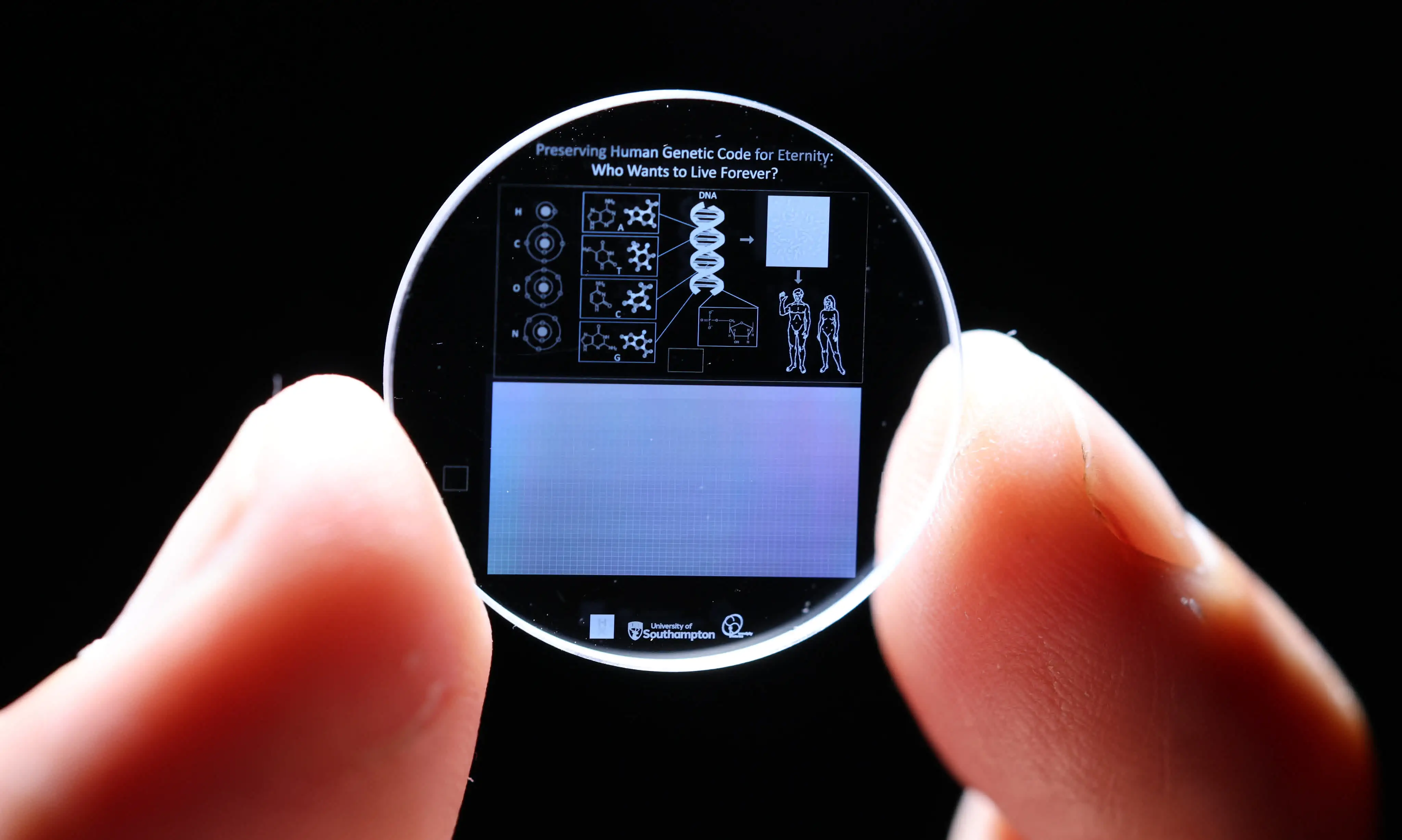Researchers at the University of Southampton in the UK successfully stored the entirety of the human genome sequence onto an indestructible 5D optical memory crystal no bigger than a penny. The indestructibility claims are no joke since the discs can withstand temperatures up to 1,000°C, cosmic radiation, and even direct impact forces of 10 tons per cm2.



https://en.m.wikipedia.org/wiki/5D_optical_data_storage
☹️
/edit
Further down in the article it is a little clearer…
The website even lists a little more…
So, it’s supposedly three dimensions of position plus angle and (maybe?) polarity. So, it seems to be more than just a marketing gimmick, but I can’t find any information about the resolution of those additional two parameters, so I can’t tell if a single voxel stores two bits or two terabits.
It sounds kinda like the “trick” on the internet for fitting more notes onto a note-sheet for an exam. You’re still using the same physical space to store information, but you’re introducing a new degree of freedom that allows you to increase storage density.
Seems more like 5 axis than 5 dimensions.
Sounds like a slice through the crystal that can be moved up and down and rotated through 2 angles (eg roll and pitch)
5 axis and 5 dimensions are essentially the same thing, right? A 2D graph has 2 axes, a 3D one has three, 4D graph can be shown with colour representing the 4th axis, etc.
Yeh, axis was the wrong term. I was thinking degrees of freedom.
However, I misunderstood the concept.
The extra dimensions are basically optical manipulation, like the other comment says with the red and blue lenses.
I thought it was more about the crystals attitude. So in addition to x, y and z, you also have alpha, beta, gamma.
Which would be 3 dimensions/axis with 6 degrees of freedom